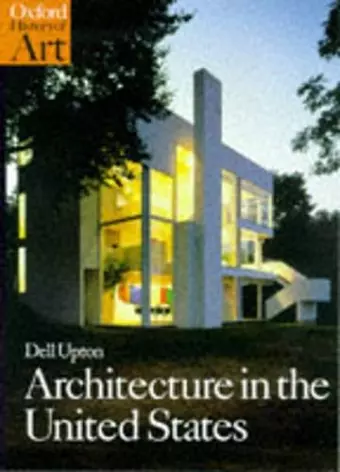Architecture in the United States
Format:Paperback
Publisher:Oxford University Press
Published:30th Apr '98
Currently unavailable, and unfortunately no date known when it will be back

American Architecture is astonishingly varied. From Indian sites in New Mexico and Arizona, and the ancient earthworks of the Mississippi Valley, to the most fashionable contemporary buildings of Chicago and New York, the United States boasts three thousand years of architectural history. It is characterized by the diversity of its builders and consumers who include Native American men and women, African, Asian, and European immigrants, as well as renowned professional architects and urban planners. Dell Upton's revolutionizing interpretation examines American architecture in relation to five themes: community, nature, technology, money, and art. In giving particular attention to indigenous, folk, ethnic and popular architectures like Chaco Canyon, Brooklyn suspension bridge, and native American houses, as well as to the great monuments of traditional histories such as Jefferson's Monticello and Wright's Fallingwater, Architecture in the United States reveals the dazzling richness of America's human landscape. From the pre-publication reviews: Dell Upton: Architecture in the United States - Reviews 'In Architecture in the United States Dell Upton essentially reinvents American architectural history. Employing a series of cultural, economic, and political contexts, his incisive and entertaining narrative examines some 3,000 years of human intervention in the natural landscape, contrasting, comparing and interweaving an astounding range of built forms. This ingenious approach focuses our attention on both the commonality and diversity of human experiences that have shaped this country. Upton's book should be read by everyone with an interest in America's cultural landscape. They will never look at it in the same way again.' Professor Kenneth A. Breisch Southern California Institute of Architecture 'In Architecture in the United States Dell Upton has dismantled the typical chronological history of American architecture and reconceived it as a thematic history, organized according to the compelling themes of "Community", "Nature", "Technology", "Money", and "Art". Upton's very broad definitions of architecture includes traditional high-art monuments like Thomas Jefferson's Monticello or Frank Lloyd Wright's Falling Water, alongside Native American houses and earthworks, typical courthouse squares, recent planned suburbs, bridges, world's fair pavilions, office buildings, and other categories of building that gives the book its freshness and forces readers to reconsider received ideas about American architecture. The book begins with a tour-de-force chapter on Monticello in which all the themes are brought to bear in explaining the...
ISBN: 9780192842176
Dimensions: 239mm x 169mm x 19mm
Weight: 785g
336 pages